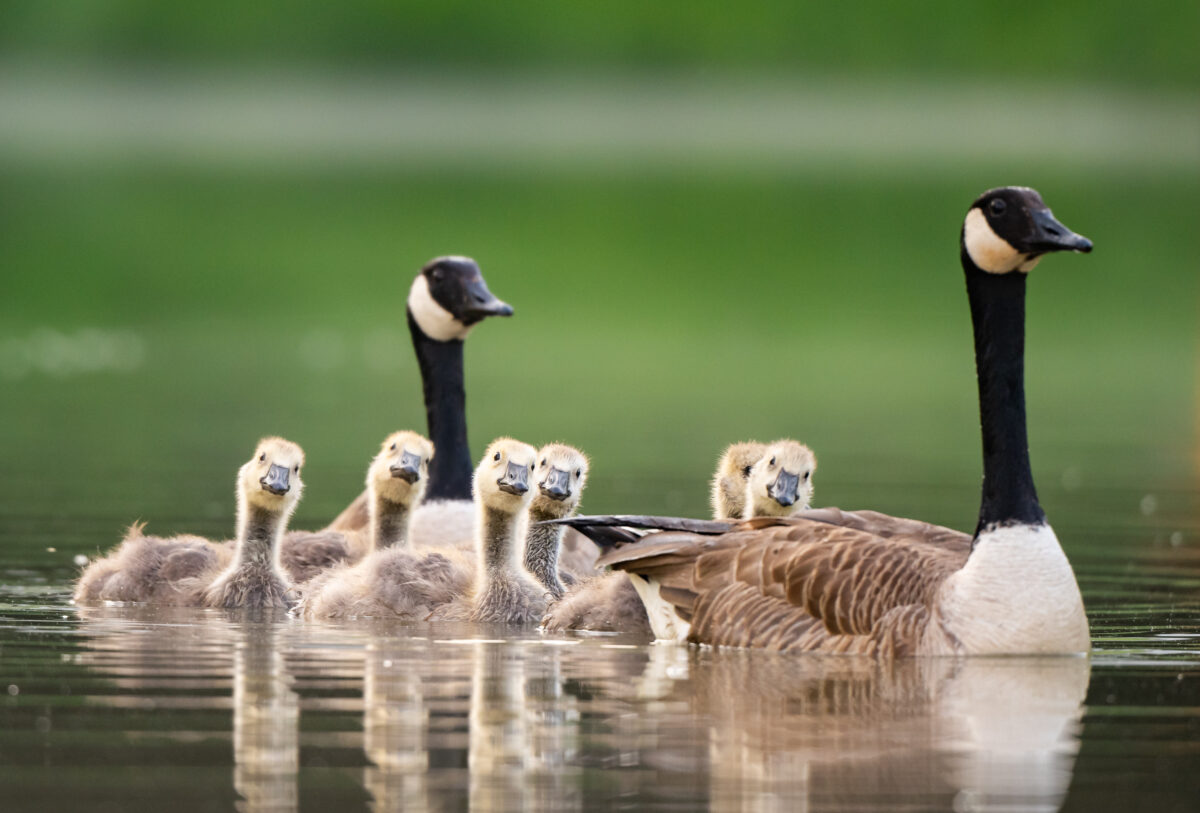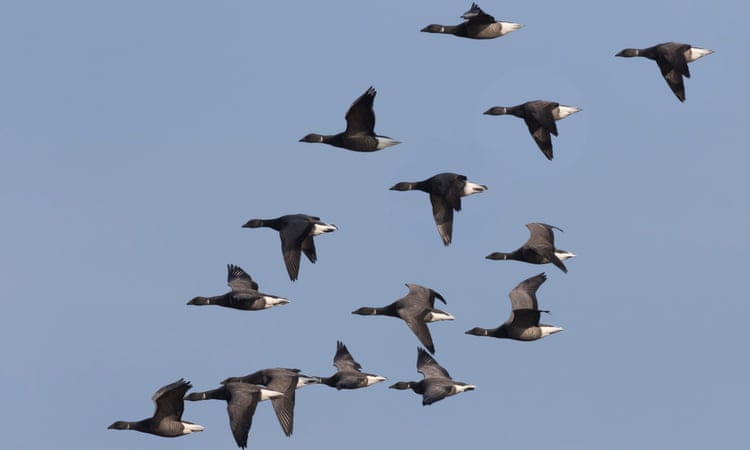As spring approaches and Canadian geese begin their annual migration, many people wonder about the legal status of these majestic birds. Whether you’re a nature enthusiast, a property owner, or simply curious about wildlife regulations, it’s important to understand the protections in place for Canadian geese. Are Canadian geese federally protected?
Canadian geese are federally protected under the Migratory Bird Treaty Act of 1918. This law makes it illegal to harm, capture, or kill Canadian geese without proper U.S. Fish and Wildlife Service permits.
While this answer provides a clear overview of the federal protection status for Canadian geese, it’s important to note that there are some exceptions and nuances to this protection. Continuing to read will help you understand the circumstances under which interactions with Canadian geese may be permitted and what actions you can legally take if these birds become a nuisance on your property.
What Are The Exceptions To Canadian Geese Protection?
While Canadian geese are federally protected, there are certain circumstances where management actions can be taken. The U.S. Fish and Wildlife Service recognizes that these birds can sometimes cause conflicts with human activities. As a result, they have established specific regulations that allow for limited control measures.
One exception is the issuance of depredation permits. These permits allow property owners or managers to use certain non-lethal methods to discourage geese from nesting or feeding in problematic areas. Such methods may include habitat modification, noise-making devices, or chemical repellents.
Another exception involves hunting. Licensed hunters can harvest Canadian geese during designated seasons by state and federal regulations. These hunting seasons are carefully managed to ensure the overall population remains stable while addressing local overpopulation issues.
How Can I Legally Manage Canadian Geese On My Property?
If you have Canadian geese on your property, it’s crucial to understand the legal methods available for managing them. The key is to focus on deterrence and habitat modification rather than directly harming the birds.
One effective strategy is to make your property less attractive to geese. This can involve letting grass grow longer near water bodies, as geese prefer short grass for grazing. Planting bushes or trees along shorelines can also discourage geese by blocking their access to water and reducing their sense of security.
Another legal option is using visual deterrents. Decoy predators like coyotes or owls can be strategically placed around your property. Reflective tape or balloons can also be effective in scaring geese away. However, it’s important to regularly move these deterrents to prevent the geese from becoming accustomed to them.
Another important consideration when managing geese on your property is bird flu prevention, as these birds can potentially transmit diseases. It is recommended that you maintain proper hygiene and limit direct contact with geese or their droppings.
You can obtain a permit for more intensive management techniques like egg addling or oiling. These methods prevent eggs from hatching and help control local populations over time. Always consult with your local wildlife agency before undertaking any such measures.
What Are The Penalties For Harming Canadian Geese?
Anyone encountering Canadian geese must understand the consequences of violating protection laws. The penalties for harming Canadian geese can be severe, reflecting the seriousness with which federal and state authorities view wildlife protection.
Violators can face criminal and civil penalties under the Migratory Bird Treaty Act. Criminal penalties may include fines of up to $15,000 and up to six months in jail for each offense. Civil penalties can result in fines of up to $5,000 per violation. Notably, each bird harmed constitutes a separate violation, meaning penalties can quickly add up.
Additionally, many states have their laws protecting Canadian geese, which can result in additional fines or penalties. Some states may also revoke hunting licenses or require community service for those found guilty of harming these protected birds.
Given the severity of these penalties, it’s crucial to always act within the law when dealing with Canadian geese. If you need clarification on the legality of any action you’re considering, it’s best to consult with local wildlife authorities or a legal expert specializing in environmental law.
How Do Canadian Geese Impact Local Ecosystems?
While much of the discussion around Canadian geese focuses on their interactions with humans, it’s equally important to understand their role in local ecosystems. These birds can have positive and negative impacts on their environments.
On the positive side, Canadian geese play a crucial role in seed dispersal. As they feed on various plants, they inadvertently spread seeds through their droppings, helping to maintain plant diversity in wetland areas. Their grazing habits can also help maintain open areas in grasslands and wetlands, benefiting other species that prefer these habitats.
However, in areas where Canadian geese populations have grown too large, they can have detrimental effects. Their droppings can contribute to nutrient overload in water bodies, leading to algal blooms and decreased water quality. Overgrazing by large flocks can damage vegetation, leading to erosion and habitat degradation for other species.
Additionally, Canadian geese can compete with other waterfowl species for nesting sites and food resources. In some cases, this competition can impact the populations of native species, particularly in areas where geese populations have become unnaturally high due to human-altered landscapes.
Why Are Canadian Geese Populations Increasing In Urban Areas?
The increasing presence of Canadian geese in urban and suburban areas is a trend that has been observed across North America in recent decades. This phenomenon is largely due to changes in the landscape and the behavior of the geese themselves.
One major factor is the creation of ideal habitats in urban areas. Well-manicured lawns, golf courses, and parks provide geese with abundant food sources and open spaces that mimic their natural grazing grounds. Artificial ponds and lakes offer safe nesting sites, often with few natural predators nearby.
Additionally, Canadian geese have shown remarkable adaptability to human presence. Over time, urban geese have become less fearful of humans, allowing them to thrive in populated areas. This habituation of human activity has made urban environments increasingly attractive to these birds.
Climate change also contributes to this trend. Milder winters in many areas have reduced the need for some populations to migrate, leading to year-round residency in urban locations that previously only saw seasonal visits. This extended presence allows geese to establish stronger ties to these urban habitats.
Lastly, the success of conservation efforts has contributed to overall population growth. Protections in the early 20th century helped Canadian geese recover from near-extinction, and in some areas, populations have grown beyond expectations. As natural habitats become crowded, more geese find homes in urban and suburban landscapes.
Taking Flight with Knowledge
Now that you understand the federal protection status of Canadian geese and the complexities surrounding their management, it’s important to take responsible action. If you’re experiencing issues with Canadian geese on your property, contact your local wildlife management office or conservation agency for guidance. They can provide specific, location-appropriate advice on legal deterrent methods and, if necessary, assist you in obtaining any required permits for more intensive management strategies.
Lead Image: The Canada goose is one of the country’s most iconic species that can be found across the provinces. (Photo: David White/Can Geo Photo Club).






Leave a Reply